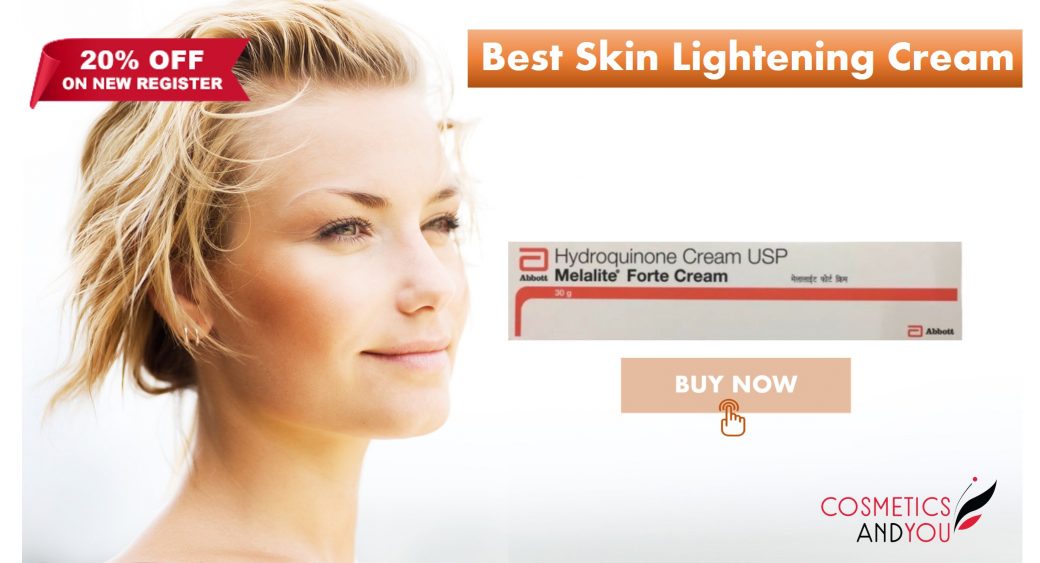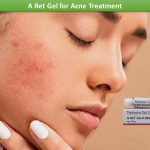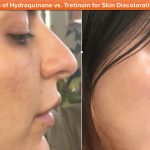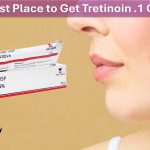With the increased options for a range of skin whitening treatments available worldwide, it has become easier to achieve the lost glow. From cosmetic products to prescription lightening treatments, there are different ways to brighten the skin tone. Read more about the best skin-lightening treatments, types, and more.
What is Skin Lightening Treatment?
Most topical skin-lightening treatments available in the market aim to reduce excessive melanin production in the skin. Since the excess amount is responsible for causing brown spots, uneven skin tone, etc., reducing this pigment production improves your complexion and restores your lost glow. A skin-lightening cream treats conditions like melasma, sunspots, freckles, and other dark spots.
Topical skin-lightening ingredients are typically melanin-reducing agents prescribed to clear excess melanin in the skin. They work by blocking the activity of the tyrosinase enzyme, which is necessary for melanin production.
An effective Skin-lightening treatment option- Topical Hydroquinone
Beauty salons cater to the enormous demand for skin-lightening treatments by offering services like bleaching and facials that claim to reduce tanning. However, these skin whitening packages deliver temporary results and cannot restore your complexion. The efficacy of these temporary options is also not scientifically proven. Therefore, it is best to get advice from a skin care specialist about skin brightening treatments that are safe and effective at the same time. Hydroquinone is one such ingredient that can be used to treat various conditions related to discoloration. It is a skin whitening agent that is extremely beneficial in reducing melanin pigment, which is responsible for the color of our skin. When applied topically on the pigmented affected area of the skin, it can cause it to lighten in color. Many people worldwide have been using Hydroquinone as a scar treatment. Its regular application can cause brown spots, age spots, sunspots, and other dark spots to lose their extra pigmentation, causing them to appear lighter and ultimately match the color of the surrounding skin. It is extremely beneficial for treating skin hyperpigmentation caused by severe sun exposure or too much exposure to UV rays.
Topical hydroquinone creams are a prescription medication for pigmentation-related skin conditions. One can buy a hydroquinone formulation with different strengths to address different degrees of hyperpigmented-related conditions.
How does Hydroquinone work for Hyperpigmentation?
Hydroquinone is one of the most effective topical treatments when it comes to reducing the appearance of hyperpigmentation. The ingredient has been thoroughly tested in numerous studies, almost all showing that it effectively lowers pigment and evens out the darkened spots like age spots and sunspots that hyperpigmentation causes. Many studies revealed that applying Hydroquinone-containing products like Melalite or Melamet led to sustained skin color improvement in people with Hyperpigment-related conditions. For better results, the treatment should be continued to reduce the skin discoloration caused by Hyperpigmentation. For most people, it produces noticeable improvements within eight to 12 weeks of consistent use, although some might see significant changes in their skin tone sooner. However, hydroquinone does not guarantee the treatment of pigmented-related conditions completely on its own. For more severe cases, a dermatologist may recommend using it with a topical formulation that effectively treats dark patches associated with hyperpigmentation.
How can a hydroquinone formulation be used to get rid of hyperpigmentation?
If you have been prescribed Hydroquinone, the best approach to get the best results is to follow the usage instructions offered by your dermatologist. The application is very simple. Testing yourself for sensitivity before using Hydroquinone regularly is always a good idea. To test your hydroquinone formulation, apply a small amount to the affected area, then check for itchiness and redness over the next 12 to 24 hours. If you feel the preparation is tolerable and you don’t experience any itching, redness, or burning sensation, you can begin the treatment under the guidance of a dermatologist. Follow the instructions below while using the cream:
- Before applying Melalite or Melamet, clean the hyperpigmented skin with mild soap or water. Be sure to apply the formulation on the dry surface.
- Take a pea-sized amount and spread it evenly on the hyperpigmentation-affected skin; it is enough cream to cover the affected area. Be cautious during the application; do not apply the cream to any pigmented skin, as it can potentially lighten its color.
- Remember to wash your hands after applying the Hydroquinone cream. Wait at least 15 minutes before applying makeup, moisturizers, sunscreen, or any other cosmetic product.
- Take care while applying the formulation near the nose, eyes, and mouth. If your affected skin is close to these areas, use a cotton swab to apply the cream.





